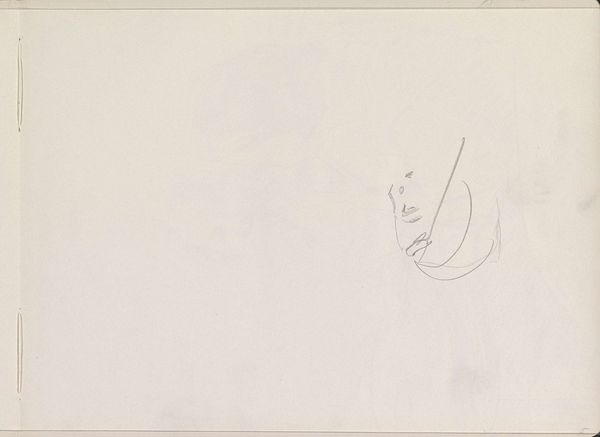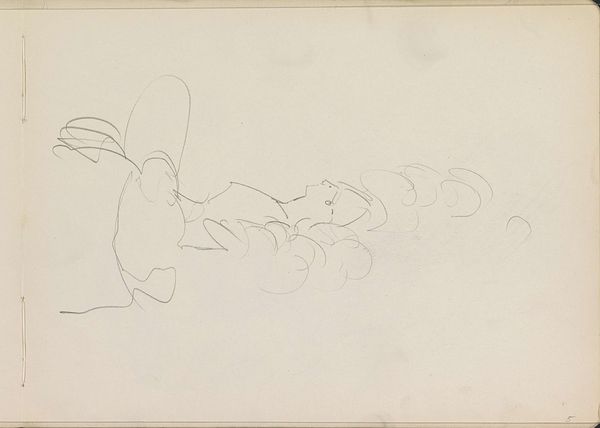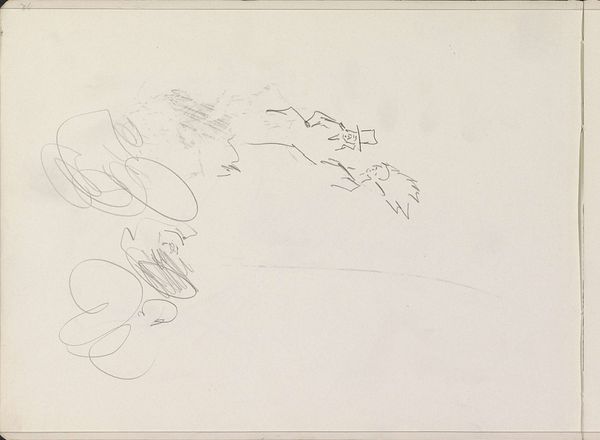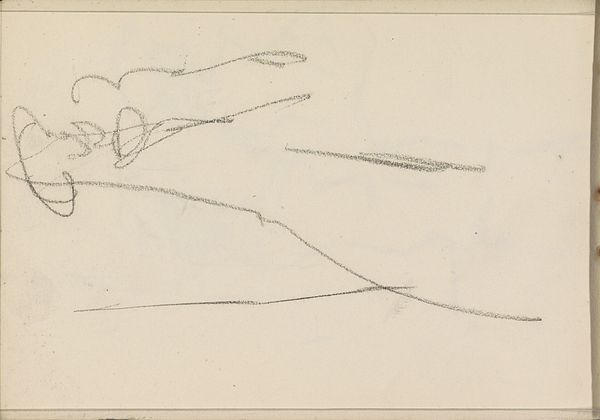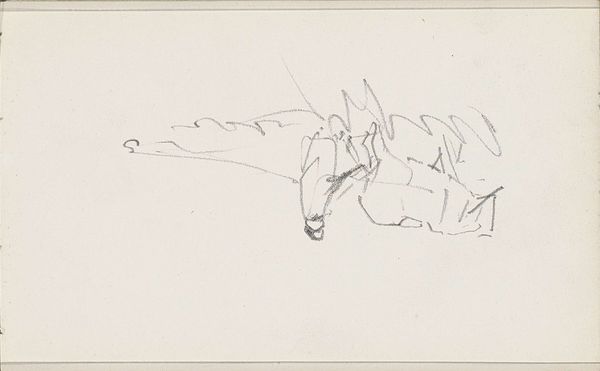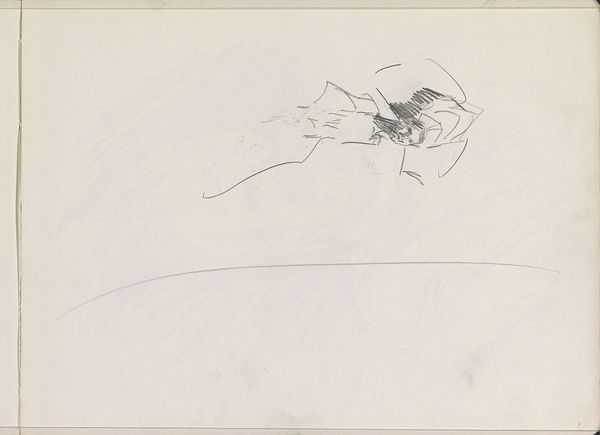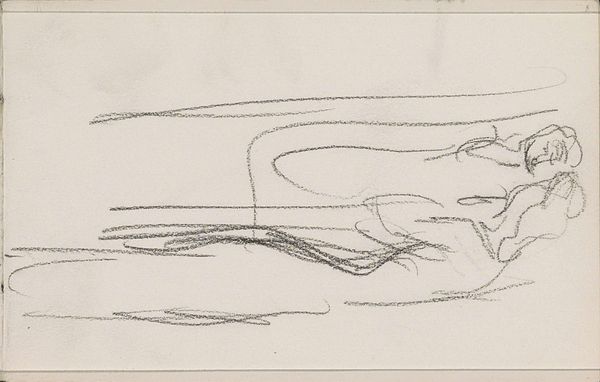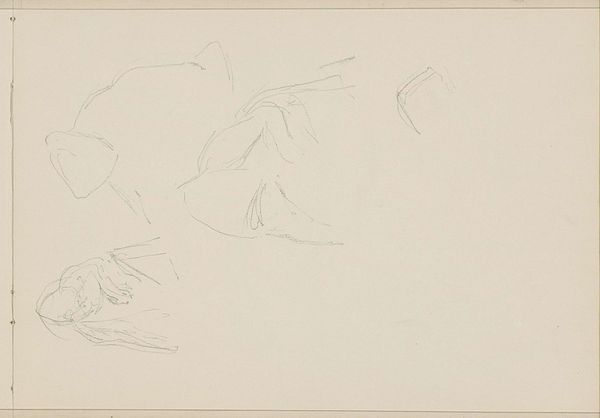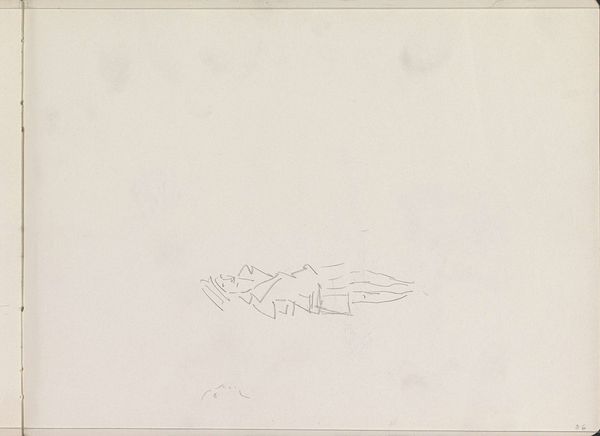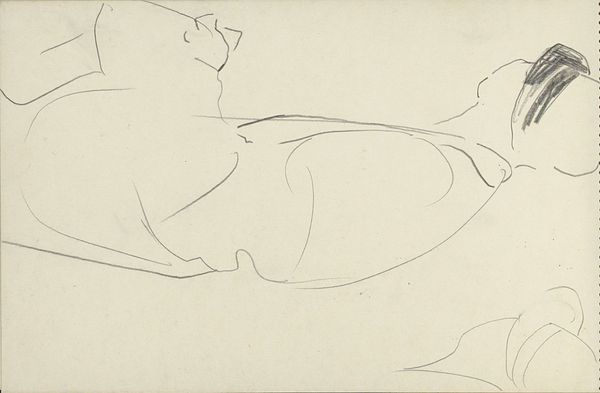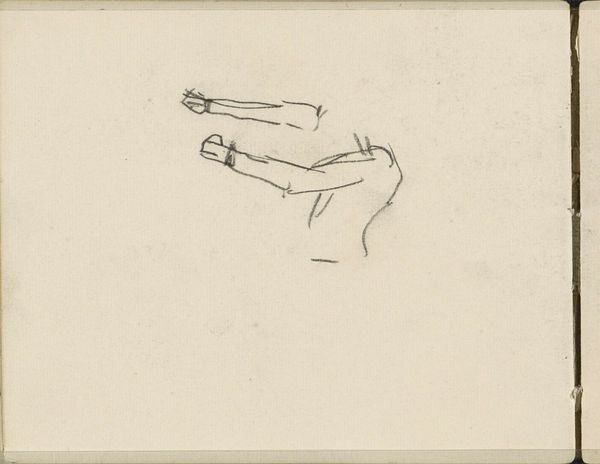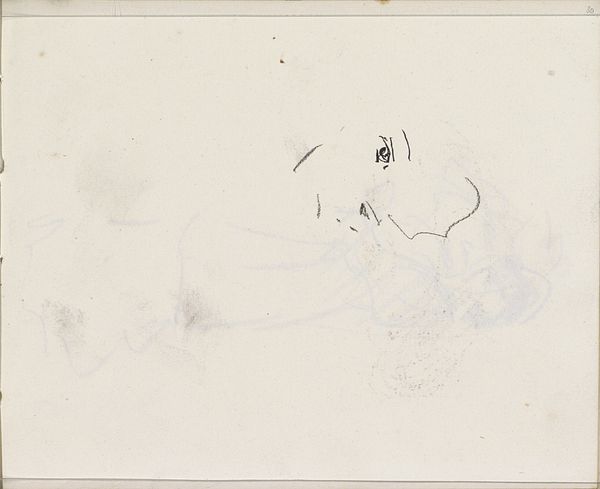
Copyright: Rijks Museum: Open Domain
Curator: The piece before us, housed here at the Rijksmuseum, is entitled "Figuurstudie," which translates to "Figure Study," created by Isaac Israels, some time between 1875 and 1934. Editor: It's so simple, almost childlike. Yet there’s something haunting about the figure’s pose, a weariness or resignation captured with such economy of line. Curator: Indeed, the economical line work speaks to the tradition of impressionism in its embrace of the quick sketch. As a preliminary drawing, it reflects not only that style but an entire period of thinking in which the fleeting moment becomes more significant than what's fixed. Note also that it’s a drawing, probably pencil on paper. The lack of embellishment is striking. Editor: Right, the medium absolutely underlines that feeling of transience. And you see that he captured not just a person but, like, an essence of human posture, instantly readable. The slumped posture can be understood across almost any time or place. I wonder who they were? What sort of class backgrounds we are speaking about. What sort of life and work made them sit or lie down like that? The smudges below only intensify the mystery to me. Curator: An interesting point; regarding class and social role, it certainly resonates. What about its placement within his artistic process? A glimpse inside his head to consider potential cultural interpretations: The downcast glance is one loaded with meaning across centuries of art history. Do you think that matters? Editor: Of course. That inherited symbolic language speaks even when, like here, the rendering feels almost abstract. It’s that interplay that makes it compelling. And regardless of any potential social message, this "figure study," still touches something universal about human frailty. I love how a quickly jotted form on a random sketchbook page can express so much. Curator: Well said. I think approaching it as a synthesis of personal process and universal meaning gives the image depth. Thank you for guiding us beyond the immediate simplicity of form to deeper readings of cultural memory. Editor: And thank you for connecting the work to wider historical and cultural themes; it shows us art's continual interplay between a quick image and big history.
Comments
No comments
Be the first to comment and join the conversation on the ultimate creative platform.
